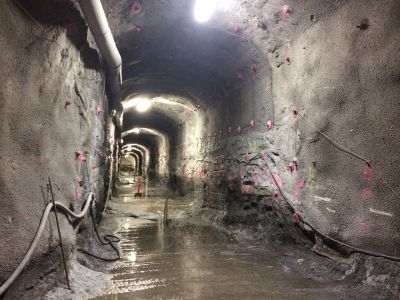Under the auspices of an EU-funded project, researchers are working on ways to dispose of nuclear waste underground and seal it off with specialised plugs. If the project succeeds, the first permanent geological repositories could be operating in Europe by 2025.
Nuclear power is set to contribute to the decarbonisation of the
European energy system and achieve the ultimate goal of reducing
dependency on fossil fuels. However, there are no permanent disposal
sites for the hazardous radioactive waste.
The
LUCOEX (Large underground concept experiments) project developed four different repository concepts with the aim of developing solutions supporting repository construction in many of the different geological host rocks found within the EU.
Leading radioactive waste management organisations from Finland, France, Sweden and Switzerland came together to focus on how to dispose of waste under hard rock.
LUCOEX is demonstrating the technical feasibility for safe and reliable construction, component manufacturing, installation and sealing of the disposal galleries that will be used for the waste.
The proof-of-concept installations are almost finalised. In Sweden, researchers successfully developed a disposal drift, upgraded the installation machinery and manufactured all installation components using an artificial wetting process. In addition, they initiated a full-scale buffer swelling test to study how the bentonite buffer evolves within the disposal drift.
After having completed instrumentation and heater designs and performed compatibility tests, researchers in France installed the instrumentation on the casing and heaters. Another task will be to simulate the heat induced by exothermic waste packages, with a target of achieving 90 degrees Celsius at the rock-casing interface.
In Switzerland, researchers successfully created a 50-metre deposition tunnel. Furthermore, they performed significant work with regard to optimising the buffer material production and the manufacturing of the necessary machinery. The next step is to install three heaters in the tunnel, backfill it with bentonite clay and seal it with a number of concrete plugs.
Finally, researchers in Finland used advanced techniques to achieve the required precision when installing bentonite buffer blocks into the deposition hole. The canister installation vehicle is complete in addition to the first test sites above and underground.
LUCOEX has presented its work at several conferences and workshops.

